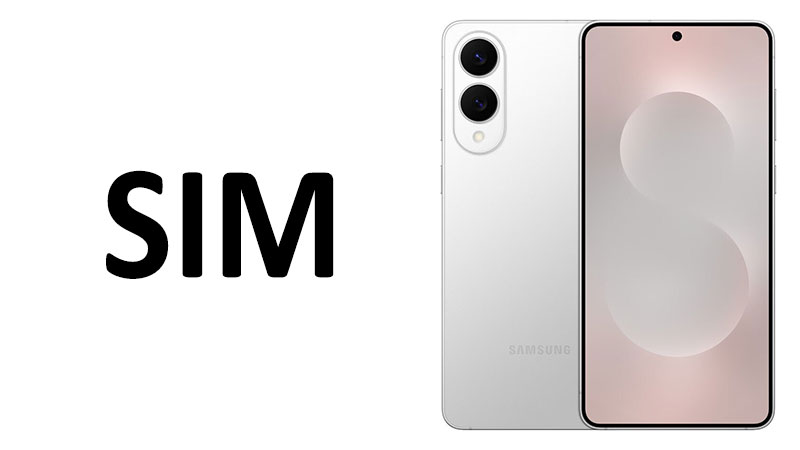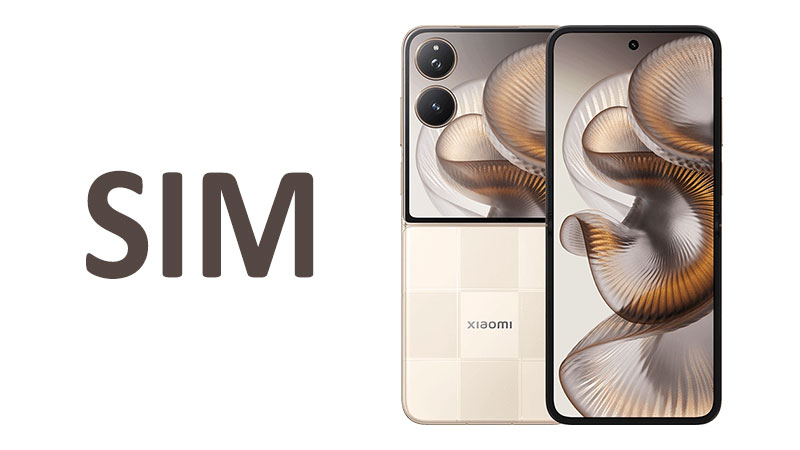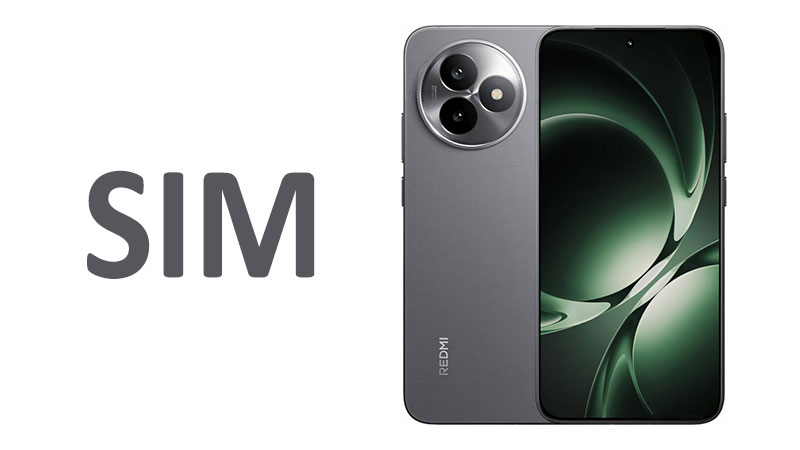The Samsung Galaxy S25 Edge SIM, Dual-SIM, and comprehensive connectivity suite represents a major leap forward. Modern smartphone users demand seamless global access. This includes flexible SIM options and cutting-edge wireless technology. Connectivity is now a primary purchasing consideration for any premium handset. This in-depth review explores every facet of the S25 Edge’s connection capabilities. We analyze how the combination of physical SIM, eSIM, and next-generation standards impacts daily use. Understanding these features helps buyers make a confident, informed decision. The S25 Edge promises reliability and speed across all connection types.
The Next Generation of SIM Technology: eSIM and Dual-SIM Flexibility
Understanding the S25 Edge SIM Configuration
The Samsung Galaxy S25 Edge offers advanced and flexible SIM card configurations. It caters to various user needs, from domestic use to international travel. The core configuration involves a hybrid system. This system allows for two simultaneous connections.
The first option is a Nano-SIM alongside an integrated eSIM. The physical Nano-SIM fits into a tray. The eSIM is a digital SIM embedded directly into the phone’s hardware. This popular combination offers high flexibility.
The second configuration is also highly versatile. It features two physical Nano-SIM slots. These slots can be used with one active eSIM profile. This means the phone can store many eSIM profiles digitally. However, it can only operate two lines concurrently. This dual-active capacity is crucial for many users. The S25 Edge therefore maximizes connectivity options.
Specialized Comparison: S25 Edge vs. Previous Models
The S25 Edge significantly advances dual-SIM functionality. Previous Samsung models often limited dual connectivity options. They sometimes required choosing between a second SIM and a microSD card. The S25 Edge offers dedicated space for two active lines. This is true whether they are physical or digital lines.
The device follows the industry trend set by key competitors. Some competitor flagships have moved entirely to eSIM-only models. The S25 Edge wisely maintains the physical SIM tray. This ensures compatibility for users in regions with slower eSIM adoption. Furthermore, the ability to support two Nano-SIMs plus an eSIM profile storage offers triple redundancy. Users appreciate this high level of choice and security. This flexibility makes the S25 Edge a global connectivity leader.
Pros and Cons of the SIM Setup
The flexible SIM setup provides substantial benefits to the user. A major pro is unparalleled convenience for global travelers. You can keep your home number active on the eSIM. You can simultaneously use a local physical SIM for data abroad. This process helps users avoid expensive international roaming fees easily. Business users also benefit greatly from this essential feature. They can keep their work and personal lines completely separate. The integration of eSIM also enhances device security. An embedded SIM cannot be physically removed if the device is lost or stolen.
However, there are minor drawbacks to consider before buying. Activating an eSIM can sometimes be complex for a first-time user. It often requires scanning a QR code or working with carrier support. Not all carriers worldwide fully support eSIM yet. This limitation means a physical SIM might still be necessary in some areas. The maximum of two active lines, though sufficient for most, is a slight restriction for power users.
Important Buyer Points for SIM Choice
Buyers must verify their local carrier’s eSIM support before purchase. If you frequently switch devices, remember that transferring an eSIM profile can be tricky. It is not as simple as swapping a physical card. Always ensure your phone is unlocked to use multiple carriers. This step is vital for leveraging the Dual-SIM capabilities fully. The S25 Edge provides the necessary hardware. The user must simply handle the carrier side of activation. This preparation ensures a smooth setup process.
Comprehensive Wireless Technology Review
5G and Global Network Compatibility
The Samsung Galaxy S25 Edge ensures top-tier cellular connectivity globally. It supports the latest mobile network standards available today. These standards include GSM, HSPA, LTE, and 5G. The inclusion of 5G is now standard for a flagship device.
This robust 5G capability provides extremely fast download and upload speeds. It offers lower latency for real-time applications and services. This is important for high-definition streaming and cloud gaming performance. The phone’s broad support for GSM, HSPA, and LTE guarantees backward compatibility. This means users will remain connected even in areas without current 5G coverage. The S25 Edge is designed to be a true global device.
Specialized Comparison: 5G Performance
Compared to older 4G LTE-only devices, the S25 Edge offers a revolutionary speed increase. The modem inside the S25 Edge is engineered for peak 5G performance. This includes support for both Sub-6 GHz and mmWave bands. This wide band support ensures access to the fastest 5G networks available globally. Competitor phones may restrict certain regional bands. The S25 Edge aims for universal, high-speed 5G access worldwide.
Pros and Cons of Cellular Connectivity
A significant pro is the phone’s future-proofing design. The robust 5G modem ensures many years of usage on the fastest networks. The seamless transition between 5G and LTE is another major advantage for travel. A minor con is that sustained 5G use consumes more battery power. This is a common trade-off with all high-performance 5G devices currently on the market. Efficient network management mitigates this effect.
Decoding Next-Generation Wi-Fi 7 Connectivity
The Power of Wi-Fi 7 (802.11be)
The Samsung Galaxy S25 Edge features Wi-Fi 7 technology (802.11be). This is one of its most important connectivity upgrades. Wi-Fi 7 provides a massive leap in wireless performance. It offers incredibly high data throughput rates. It also significantly reduces connection latency compared to older standards. This makes it ideal for demanding tasks like 8K streaming and augmented reality.
The phone supports tri-band operation. This means it can utilize the 2.4 GHz, 5 GHz, and 6 GHz frequency bands. Using the 6 GHz band provides access to 320 MHz channels. These wider channels dramatically increase data transmission capacity. This speeds up large file transfers quickly.
Multi-Link Operation (MLO)
A key feature of Wi-Fi 7 is Multi-Link Operation, or MLO. MLO allows the S25 Edge to send and receive data across different frequency bands simultaneously. For example, it can use the 5 GHz and 6 GHz bands at the same time. This aggregation of bandwidth greatly boosts connection speed. It also ensures a more stable connection throughout the house or office. If one band experiences temporary interference, the device can instantly switch or use the other. This reliability is paramount for real-time applications. MLO makes the connection more robust.
4K QAM and Latency Reduction
Wi-Fi 7 introduces 4K QAM (Quadrature Amplitude Modulation). This advanced modulation technique increases data density efficiently. It packs more bits of data into each signal transmission. This results in a theoretical 20% increase in peak data rates compared to Wi-Fi 6E. Furthermore, MLO and other Wi-Fi 7 features drastically reduce latency. Latency can drop to as low as 1 millisecond. This low latency is a game-changer for cloud gaming and wireless VR experiences.
Specialized Comparison: Wi-Fi 7 vs. Wi-Fi 6E
The S25 Edge’s Wi-Fi 7 capability dwarfs previous Wi-Fi 6E devices. Wi-Fi 6E was fast and efficient, but Wi-Fi 7 is revolutionary. The previous standard lacked MLO and the wider 320 MHz channel width. Users upgrading from a Wi-Fi 6 device will notice an immense improvement. This is especially true in crowded network environments. The S25 Edge is truly future-proof in the wireless networking domain. It sets a new standard for smartphone Wi-Fi.
Pros and Cons of Wi-Fi 7
The pros are overwhelming speed and connection stability. Users will experience virtually lag-free connectivity when paired with a Wi-Fi 7 router. The seamless performance of high-bandwidth apps is a major selling point. The only con is the need for a compatible Wi-Fi 7 router. Without this dedicated hardware, the S25 Edge will default to Wi-Fi 6 or 6E speeds. The phone’s advanced features require advanced infrastructure.
Wi-Fi Direct Functionality
The inclusion of Wi-Fi Direct remains a useful connectivity feature. Wi-Fi Direct allows devices to connect peer-to-peer without needing a router. This is perfect for quick, high-speed file transfers between the S25 Edge and other devices. It provides a simple and fast local sharing solution. This is helpful when no Wi-Fi network is available.
Reviewing Bluetooth, Positioning, and Other Ports
Bluetooth 5.4 for Enhanced Audio
The Samsung Galaxy S25 Edge features Bluetooth 5.4 connectivity. Bluetooth 5.4 is the latest standard available to consumers. It builds upon previous versions with key improvements. These improvements focus on power efficiency and security.
Crucially, Bluetooth 5.4 enhances support for LE Audio. LE Audio stands for Low-Energy Audio technology. This technology uses the efficient LC3 codec. It delivers better sound quality even at lower bitrates. Furthermore, it improves connection stability greatly. This means fewer dropouts when using wireless earbuds or headphones. The enhanced power control also extends the battery life of connected accessories. Gamers will also appreciate the lower latency provided by this new standard.
Specialized Comparison: Bluetooth 5.4 vs. 5.3
While Bluetooth 5.3 was a solid performer, version 5.4 offers refinement. It features improved Isochronous Channels for better connection reliability. This prevents brief audio dropouts during playback or calls. The dynamic power control also optimizes the radio output efficiently. This subtle change leads to noticeable power savings on accessories. The S25 Edge ensures best-in-class wireless audio performance.
Global Positioning System Accuracy
The S25 Edge offers robust global positioning support. It integrates GPS, GLONASS, GALILEO, and BDS technologies. GPS is the standard United States system. GLONASS is the Russian system. GALILEO is the European system. BDS stands for BeiDou Navigation Satellite System from China.
Using all these systems simultaneously boosts accuracy substantially. It also improves reliability and speed of location locking. This enhanced positioning is crucial for navigation apps. It also benefits location-based services and precise fitness tracking. Users can rely on pinpoint accuracy, even in dense urban areas. This makes city navigation effortless and precise.
NFC for Seamless Transactions
Near Field Communication, or NFC, is included in the S25 Edge. This feature enables convenient contactless payments using services like Samsung Wallet. It also allows for quick pairing with other NFC-enabled devices instantly. NFC remains an essential feature for modern, secure transactions. It is a vital component of the device’s feature set.
USB Type-C 3.2 for High-Speed Data
The device features a USB Type-C 3.2 port at the bottom. This port is highly versatile and multi-functional. It supports fast charging and high-speed data transfer simultaneously. The 3.2 generation ensures rapid file movement between the phone and a computer. It also allows for connectivity to external displays and peripherals easily. This is far superior to older USB 2.0 or 3.0 standards used in budget phones. This high-speed port ensures future compatibility.
Pros and Cons of the Overall Connectivity Suite
Comprehensive Strengths
The biggest pro is the sheer versatility of the SIM configuration. The Nano-SIM and eSIM combination provides ultimate traveler flexibility. Another major strength is the inclusion of Wi-Fi 7 capability. This future-proof standard ensures the fastest possible wireless networking speeds available. The Bluetooth 5.4 adoption guarantees optimized audio quality and efficiency. Robust 5G support across global bands ensures fast cellular data everywhere. The USB Type-C 3.2 port allows for extremely fast wired connections.
Potential Weaknesses
The main drawback is that full potential requires companion hardware. Wi-Fi 7 demands a compatible router at home or the office. Furthermore, some users in specific markets might still prefer the physical Dual-SIM tray over eSIM. The ongoing complexity of setting up an eSIM with some small carriers is also a minor consideration. The phone’s powerful connectivity features will consume more battery during peak use. However, these drawbacks are common to all advanced flagship devices. They do not detract significantly from the overall offering.
Key Considerations for the Buyer
For the user, the Samsung Galaxy S25 Edge is a connectivity powerhouse. It is particularly well-suited for two specific user groups today. The first is the frequent international traveler. The Dual-SIM capability drastically simplifies getting local data access. The second group is the high-performance user. This includes mobile gamers and virtual reality enthusiasts. They will benefit immensely from the low-latency 5G and Wi-Fi 7 connection.
Before buying, consumers should evaluate their home network infrastructure. Upgrading to a Wi-Fi 7 router will unlock the phone’s full potential benefits. Conversely, if you only have an older Wi-Fi 5 router, the Wi-Fi 7 feature will not be utilized. The S25 Edge is an investment in future connectivity standards. It offers an unparalleled platform for the next decade of wireless technology. Choose the S25 Edge if speed and flexibility are your top priorities.
Conclusion
The Samsung Galaxy S25 Edge sets a new industry benchmark for connectivity performance. Its integrated approach to SIM management is highly flexible and convenient. It perfectly balances traditional physical SIM needs with modern eSIM convenience. Furthermore, the inclusion of next-generation standards is highly commendable. Wi-Fi 7 and Bluetooth 5.4 deliver speed, stability, and efficiency consistently. The robust global network support ensures worldwide compatibility for travelers. This device is the definitive choice for users who demand the fastest and most reliable connections available. Choosing the S25 Edge means choosing future-proof, versatile connectivity.
Frequently Asked Questions (FAQ)
Is the Samsung Galaxy S25 Edge a true Dual-SIM phone? Yes, it is a true dual-active device. It supports a maximum of two active lines at one time. These can be two Nano-SIMs or one Nano-SIM and one eSIM.
Does the S25 Edge support Wi-Fi 7? Yes, the S25 Edge supports Wi-Fi 7 (802.11be). This provides faster speeds, lower latency, and better network stability. You need a Wi-Fi 7 router to use this feature fully.
How many eSIM profiles can I store on the phone? You can store multiple eSIM profiles on the S25 Edge digitally. However, you can only have one eSIM and one physical SIM active simultaneously.
Does Bluetooth 5.4 improve battery life for accessories? Yes, Bluetooth 5.4 includes dynamic power control settings. These settings optimize the radio output. This theoretically extends the battery life of connected Bluetooth accessories.
What is the benefit of the USB Type-C 3.2 port? The USB Type-C 3.2 port offers extremely fast data transfer speeds. It is also used for high-wattage fast charging. This makes moving large files or charging the phone very quick.



